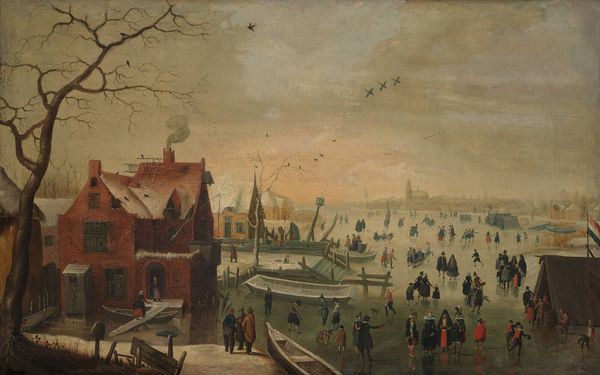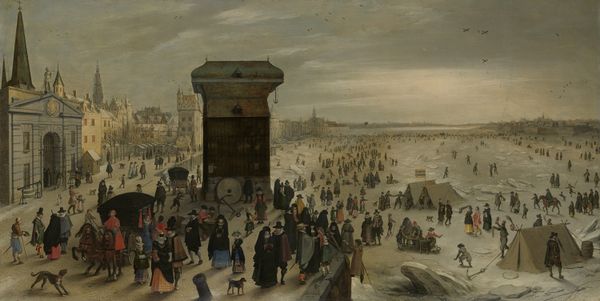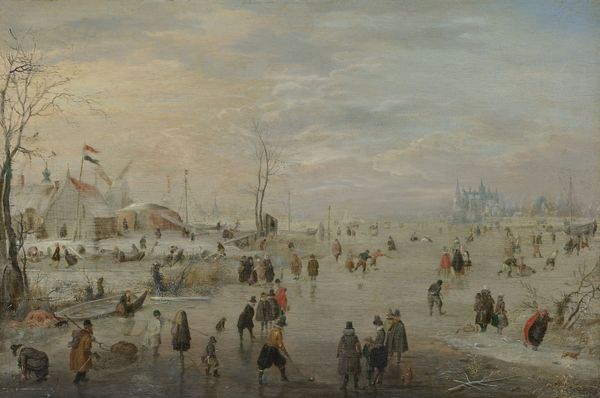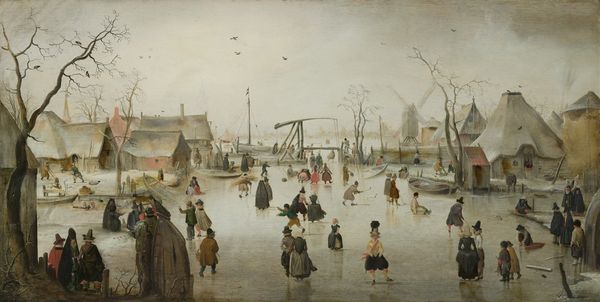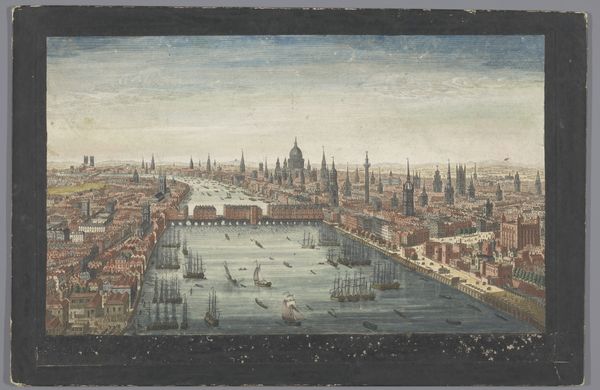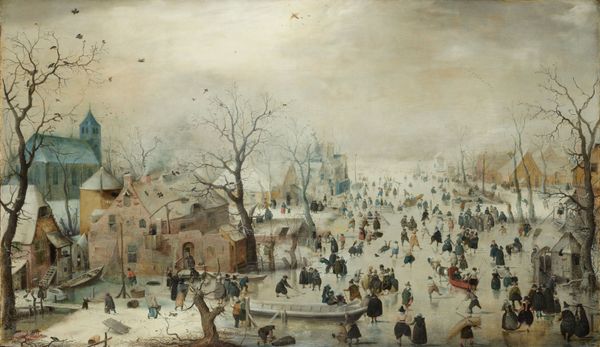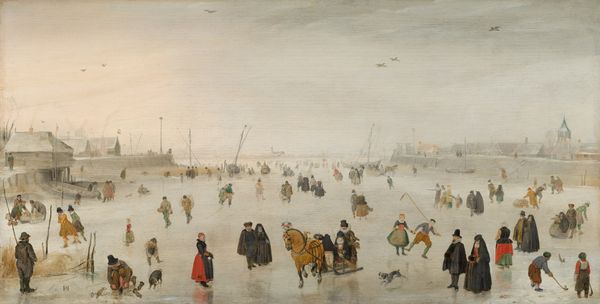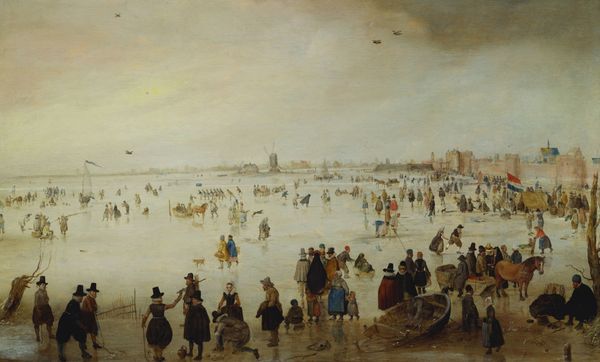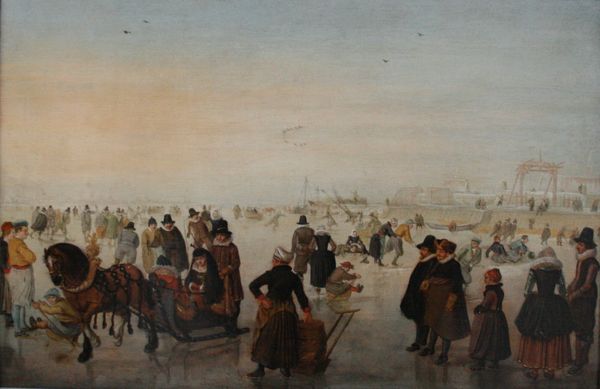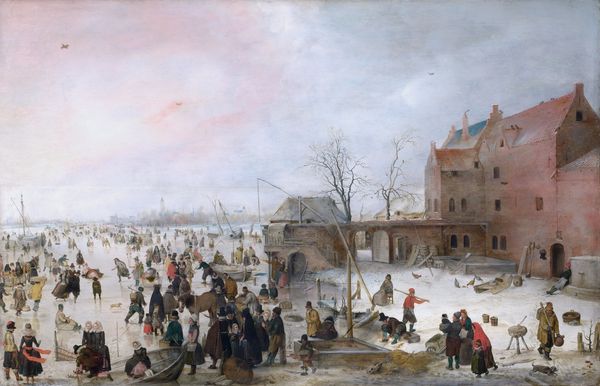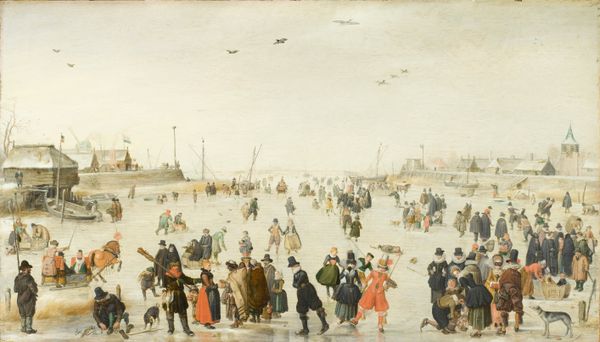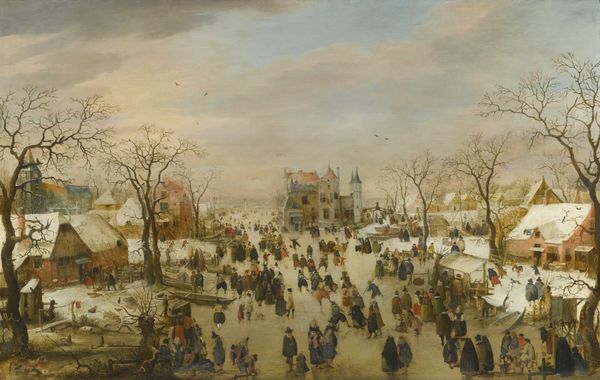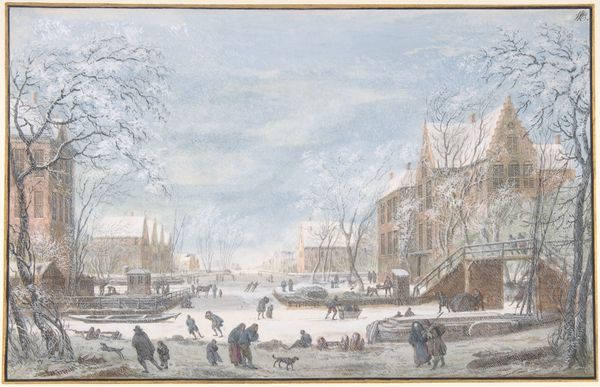
Dimensions: support: 1143 x 1524 mm
Copyright: © The estate of L.S. Lowry/DACS 2014 | CC-BY-NC-ND 4.0 DEED, Photo: Tate
Curator: Looking at this work, its scale, over a meter in both dimensions, immediately strikes me as ambitious for Lowry, particularly given his usual subject matter. It's called "The Pond." Editor: I'm struck by the overwhelming greyness and the sheer density of the industrial landscape, yet the human figures seem to persist with a strange optimism. Curator: Indeed, Lowry’s work often focused on depicting the industrial landscapes of Northern England and the lives of the working-class people who inhabited them. He's known for his distinctive style, those "matchstick men" set against a backdrop of factories and terraced houses. Editor: And those factories, looming over the "pond," are so powerful. It's a poignant juxtaposition of industry and a community trying to carve out moments of leisure. This piece really highlights the lived experience of those in industrial England. Curator: It's fascinating how Lowry captured the effects of industrialization on the community. Editor: Absolutely. And despite the bleakness, there's a vitality in the depiction of the figures that underscores the resilience of these communities. Curator: A testament to his commitment to representing working-class life as he saw it. Editor: It’s a vital depiction, even if the palette is muted. I appreciate revisiting it through this lens.
Comments
Join the conversation
Join millions of artists and users on Artera today and experience the ultimate creative platform.
tate 6 months ago
⋮
This industrial landscape contains many features typical of Lowry’s work: smoking chimneys, terraced houses, the Stockport Viaduct, and figures swarming through the city’s streets and open spaces. Though seen as a realist, Lowry’s works were largely composed from a variety of repeated motifs, becoming increasingly nostalgic as time went on. The artist said, ‘I hadn’t the slightest idea of whatI was going to put in the canvas when I started the picture but it eventually came out as you see it. This is the way I like working best.’ Gallery label, September 2016
